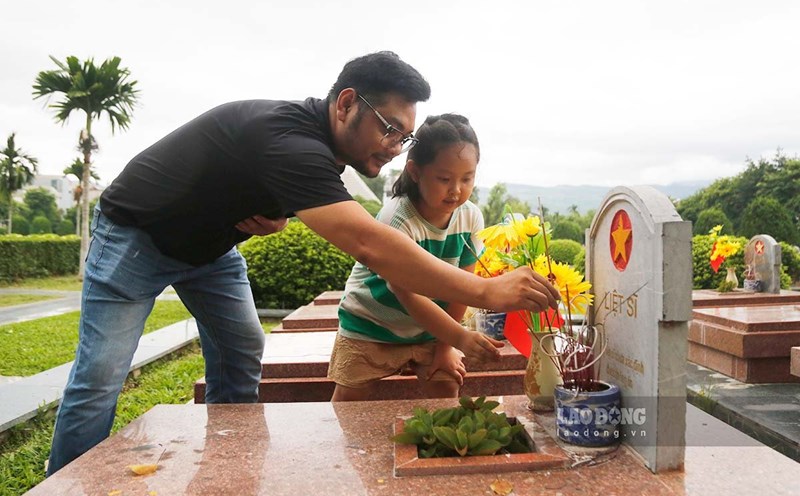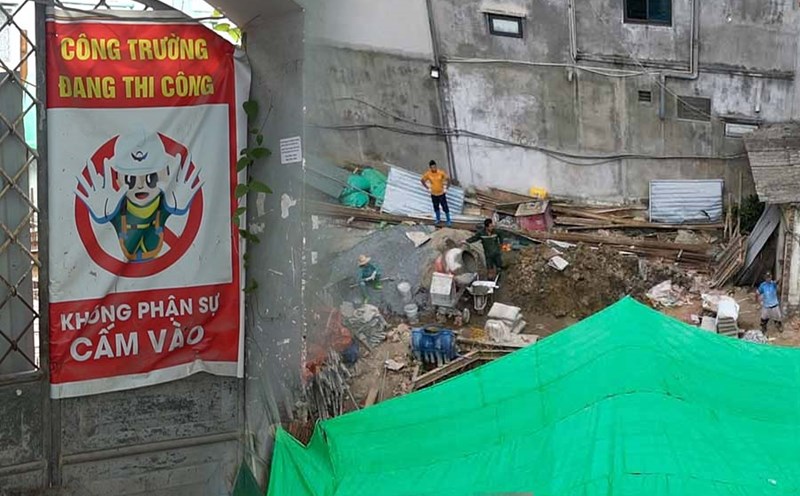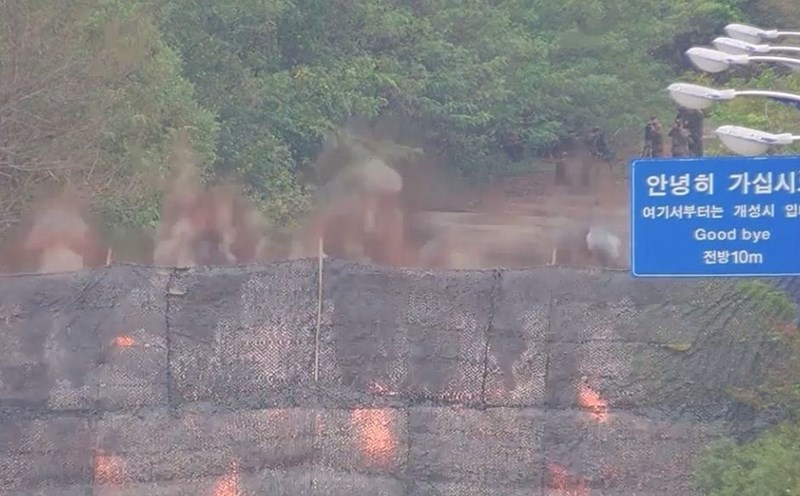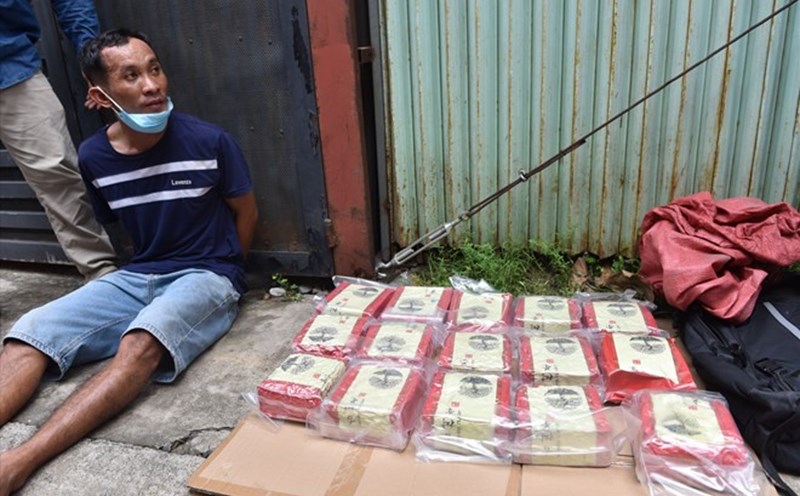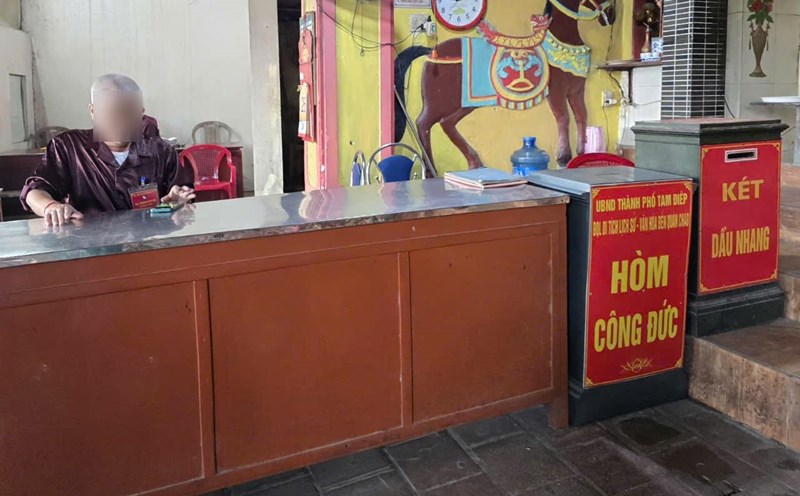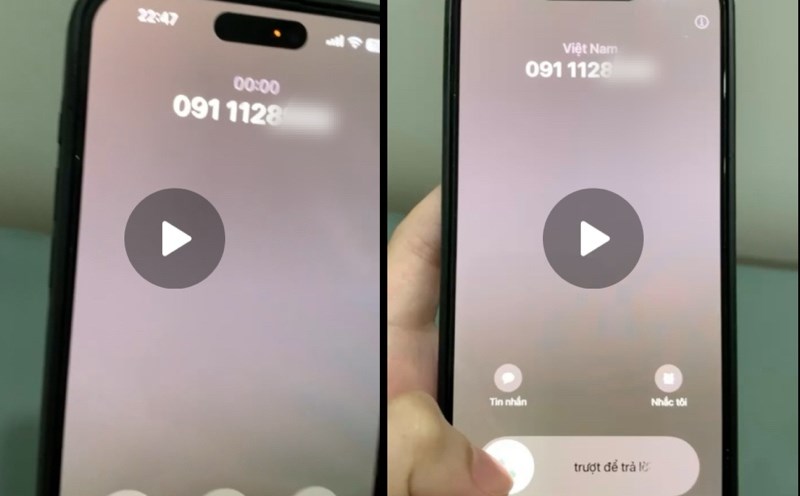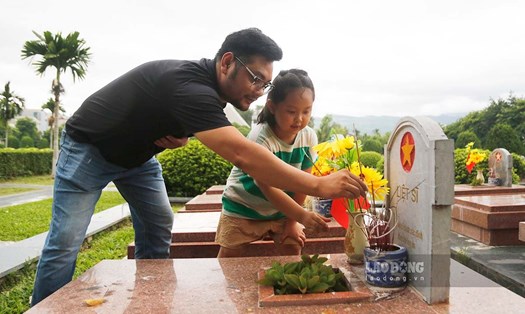*
Perhaps, except for the traditional Lunar New Year, there is no other time of the year when Vietnamese people quietly invite each other to make so many offerings. In the last days of July, kitchen smoke mixed with incense smoke, stinging the eyes. The month to commemorate the heroic martyrs who fell for the independence and freedom of this country.
Countless generations of Vietnamese men have fallen to protect the Fatherland since the country was first formed, through dozens of national defense wars, until this peaceful time. All are remembered on July 27 , a conventional date that accommodates all, regardless of era, regardless of historical period, because it is the day to honor those who sacrificed their lives for peace. peaceful, independent.
The nation's dignity has been written in the blood of thousands of heroic martyrs, so that we can understand the value of "independence and freedom". Thanks to the fallen generations, we can sit peacefully in our families to eat a delicious meal and sleep peacefully without being startled.
To eat that bowl of rice, we must remember those who did not return after the fire and smoke, and must make a tray of rice offerings so that the heroic spirits can feel warm and warm, and those who remain will also feel less heartbroken. Because after all, Vietnamese people still attach great importance to eating, "people's food is heavenly", people take food as heaven. Peace, independence, freedom can still be abstract, being able to eat a full meal, living without having to worry about hunger and thirst, that is peace.
Therefore, Vietnamese people make offerings of rice to thank them, to remember the merits of the heroes who helped them have "peaceful" meals. What we desire and desire, others also desire and desire. Isn't that like "the body is not desirous, the body is a corpse"?
Therefore, preparing a clean offering tray is also a way to remember the merits of the martyrs who sacrificed so that we can offer this offering tray. That small ceremony and sincerity are also solemn and respectful like offering a tray of rice to heaven, earth, and ancestors on New Year's Eve and New Year's Day.
Depending on the family situation, the offering tray can be a tall one, a full feast or just a simple bowl of clean water and a stick of incense. But in general, the offering tray is close to the formal Vietnamese tray, used to treat relatives, guests or during reunions.
The soul of a martyr is not as illusory as God or Buddha, or as distant as an ancestor, but only as a grandfather, father, brother, husband, son or uncle. .. once shared the joys and sweets in this human world, the image still remains. So the offering tray is only full of familiar dishes, or dishes that the deceased liked to eat.
Overall, the basic offering tray will be sticky rice, boiled chicken, salty dishes, and fruits. The dishes in the offering tray of the North are often carefully prepared, full of sticky rice, boiled chicken, pork sausage, roasted meat, braised veal, bamboo shoots cooked with pork leg, vermicelli cooked with chicken intestines, sticky rice, and areca flower sweet soup. ... according to the formula 4 plates + 4 bowls or 6 plates + 6 bowls.
Meanwhile, the offering tray in the Central region is more honest and authentic with dishes made with what is available such as fish and shrimp caught at sea, vegetables and fruits grown in the garden, chickens and pigs raised in cages. The dishes in the offering tray are divided into 4 groups: soup, stir-fry, boiled and fried/grilled.
Bone soup, bitter melon soup stuffed with meat, chicken intestine soup, boiled pork, boiled chicken, mixed stir-fry plate, grilled shrimp, fried fish, fried spring rolls, fried rice, sticky rice with sweet soup... are the dishes commonly found in the restaurant. July offering tray in the Central region.
Perhaps the offering tray of the South is the closest, because it is still familiar dishes in daily life. Such as braised meat or snakehead fish braised in coconut water, boiled pork belly, pork stewed with bamboo shoots, sour stir-fried meat, salty stir-fried meat with vegetables or stir-fried shrimp.
Each region has different customs and traditions, but when making offerings, Vietnamese people always follow the same general rules. Absolutely do not season food, try dishes to make rice for death anniversary offerings, or do not offer salads that are raw or have a fishy smell.
The death anniversary offering tray of rice must be placed separately, displayed on new dishes or used exclusively for making offerings, avoiding sharing with dishes used every day. Because these bowls and chopsticks and dishes are offered to the heroic martyrs, they need to be careful and cannot be overdone or spoiled.
**
Nearly ten years ago, the writer had the opportunity to attend a very special death anniversary, so he better understood the rules in making this offering. It was a tray of food to worship 64 martyrs who sacrificed their lives in the battle to defend Gac Ma island on March 14, 1988. The person who made the offering was Mr. Hoang Do (now deceased), from Tan Dinh village, Hai Ninh commune, Quang Binh, father of martyr Hoang Van Tuy.
Mr. Do's offering tray is very rustic with boiled duck eggs, white rice, spring rolls, boiled chicken, boiled pork, mixed stir-fry plate, bone soup, white wine, cigarettes, tea, fruits, sausage and a little bit. Votive. However, the offering tray is furnished with 64 bowls and 64 brand new pairs of chopsticks so that "brothers and sisters live together and die together, so the next generation's offering tray must come back and sit and eat together."
That offering tray with 64 pairs of bowls and chopsticks has been maintained for more than 10 years, until Mr. Do passed away from the mountains and was continued by his children. Looking at the image of Mr. Do, who is nearly 90 years old, still dressed neatly to invite the heroic spirits of his son and 63 comrades over for dinner, I sadly remember the Commemoration Ceremony for Hoang Sa soldiers of people on Ly Son island ( Quang Ngai).
The Commemoration Ceremony for Hoang Sa Soldiers is essentially a commemoration of the death anniversary of Vietnamese soldiers who sacrificed their lives for sovereignty over the sea and islands in the 17th century. The Nguyen Lords established the "Hoang Sa Team" consisting of 70 people skilled in seafaring. to go out to sea to measure waterways, patrol the sea and islands, and at the same time set landmarks and erect sovereignty stele on the Hoang Sa and Truong Sa archipelagos.
Every 2nd lunar month, this team of soldiers receives orders to leave and return in the 8th lunar month. The Hoang Sa Flotilla was later consolidated into the Hoang Sa Navy. During three centuries, there have been tens of thousands of Hoang Sa navy soldiers performing the task of preserving territorial sovereignty in the two archipelagos of Hoang Sa and Truong Sa, many of whom have never returned, only being allowed to return home. Summon souls with wind tombs located on Ly Son island.
The Hoang Sa Soldiers Commemoration Ceremony is to commemorate the soldiers who sacrificed their lives. Khao cui is an annual ritual, while khat soldier is a ritual to offer the lives of soldiers of the Hoang Sa navy. The Hoang Sa Soldiers Commemoration Ceremony also serves to worship and commemorate the deceased soldiers of Hoang Sa and Truong Sa.
Offerings at the Hoang Sa soldiers' Appreciation Ceremony often include betel, wine, fruit, meat, fish, rice, salt, fish sauce, sticky rice, dry cakes and especially a bamboo boat with a base made of banana tree trunks filled with enough sails, flags, banners; The effigy is made of bamboo frame and covered with five-colored paper and the relics write the names of family members who died while serving as Hoang Sa soldiers.
The scale of the Hoang Sa Soldier Commemoration Ceremony is very large, and was recognized by the Ministry of Culture, Sports and Tourism as a National Intangible Cultural Heritage in 2013. However, it also has similar meaning. Mr. Hoang Do's offering tray of rice to 64 Gac Ma martyrs commemorates those who sacrificed their lives on the waves of the East Sea to maintain sovereignty over the islands and seas for the Fatherland and the nation.
Therefore, every July incense smoke stings the eyes, because every Vietnamese person's heart is moved when talking about and remembering the heroic martyrs who fell to help the country stand up. Each individual's gratitude is the most respectful offering to the heroes!

